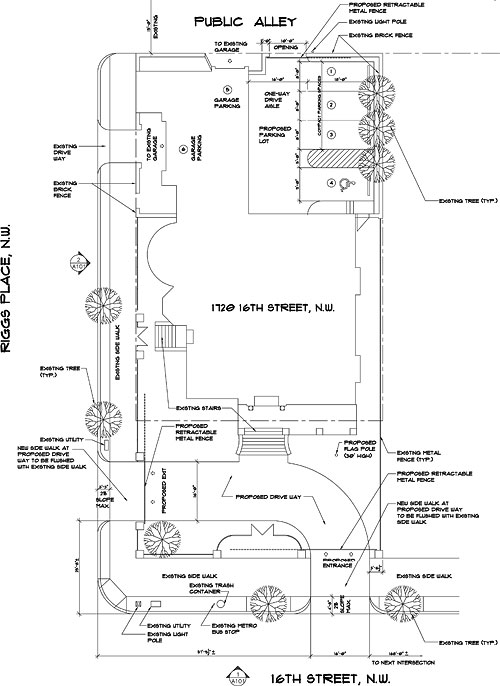Congo wants circular driveway at 16th and Riggs

Photo by Mr. T in DC on Flickr.
The Republic of the Congo has purchased the historic Toutorsky Mansion at 16th and Riggs, NW, and is requesting permission to replace much of the front yard with a circular driveway. The embassy can function in the space without the driveway, and DC should deny that element.
The 18-room house, built in 1894 for for Supreme Court Justice Henry Billings Brown, writer of the famous 1896 Plessy v. Ferguson decision upholding segregation until a later decision ironically bearing the name of Brown in 1954.
Since then the building has been used by the Persian government; the US nonprofit that pushed for the creation of Israel; a music academy run by Russian nobleman Basil Peter Toutorsky; Johns Hopkins University; and most recently as a bed and breakfast which drew neighborhood opposition. The BZA limited the B&B to 6 rooms instead of 10 in 2001.
The Republic of the Congo should not be confused with the Democratic Republic of the Congo (formerly known as Zaire), which owns a different mansion at 18th and New Hampshire. That building was the subject of a different historic preservation debate after neglect threatened to destroy the building. Local and citywide preservation groups successfully pushed the DRC government to restore the building.
As Borderstan reports, the Congo government plans to house the ambassador and employ 10 staff as well as “one small scale social function each month.” They are not proposing any changes to the building itself, but want to make two changes to add vehicular capacity.
One change would turn a courtyard in the rear, facing a public alley, into a parking lot for 4 cars. That would remove part of the “historic” brick wall at the rear of the courtyard but seems generally unobjectionable, though a few neighbors are also opposing that because of concerns about adding traffic in the alley. There is also already a garage in the rear which can hold 2 cars.
The other would pave over most of the front yard and replace portions of the existing iron fence with motorized gates to create a circular driveway entering off 16th and exiting onto Riggs.
These driveways interrupt the pedestrian realm and embassies typically use them for extra parking. In fact, an attorney for the Congo said yesterday that the embassy intends to have the ambassador park his car there each day and leave it there all day.
This happens despite the law prohibiting parking in public space. The entire front yard is public space, as the property line itself is beyond the top of the front stairs leading into the building. This would turn a beautiful yard and fence into a space that’s just more roadway.
The 16th Street curb cut also would intersect part of a bus stop used by the S bus lines, and the attorney said he expected the bus stop would have to be moved. These curb cut locations clearly violate the DDOT policies about the placement of curb cuts needing to be 50 feet from an intersection.
Finally, while the drawing shows the existing trees remaining, people have pointed out that construction in the root zone of oak trees almost always kills the trees. Also, I went by the property, and the driveway appears to intersect at least one tree, whose actual location doesn’t quite match what’s shown on this plan.
Zoning decisions about chanceries are handled by the Foreign Mission Board of Zoning Adjustment, which includes the regular Board of Zoning Adjustment as well as members from NCPC and the National Park Service. The FMBZA is traditionally very deferential to embassies, sometimes gently encouraging changes but not actually disapproving applications.
The FMBZA also gets to make some decisions ordinarily given to other boards. For example, changes to a historic building (as this is) normally also go through the HPRB, but according to the Congo attorney, for foreign missions the FMBZA makes that call as well instead of the HPRB.
I’ve been told that, in fact, the FMBZA also has the power to grant the circular driveway if they choose.

